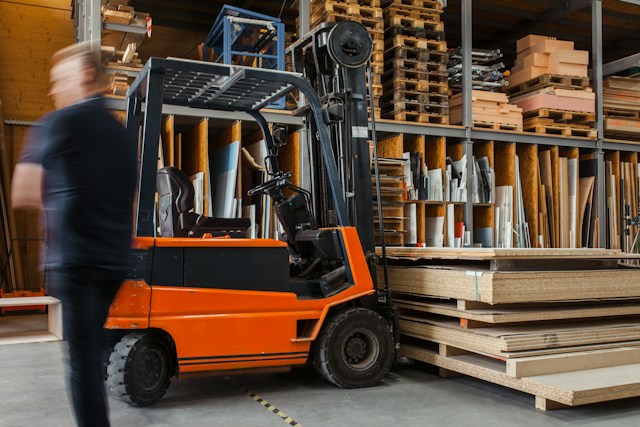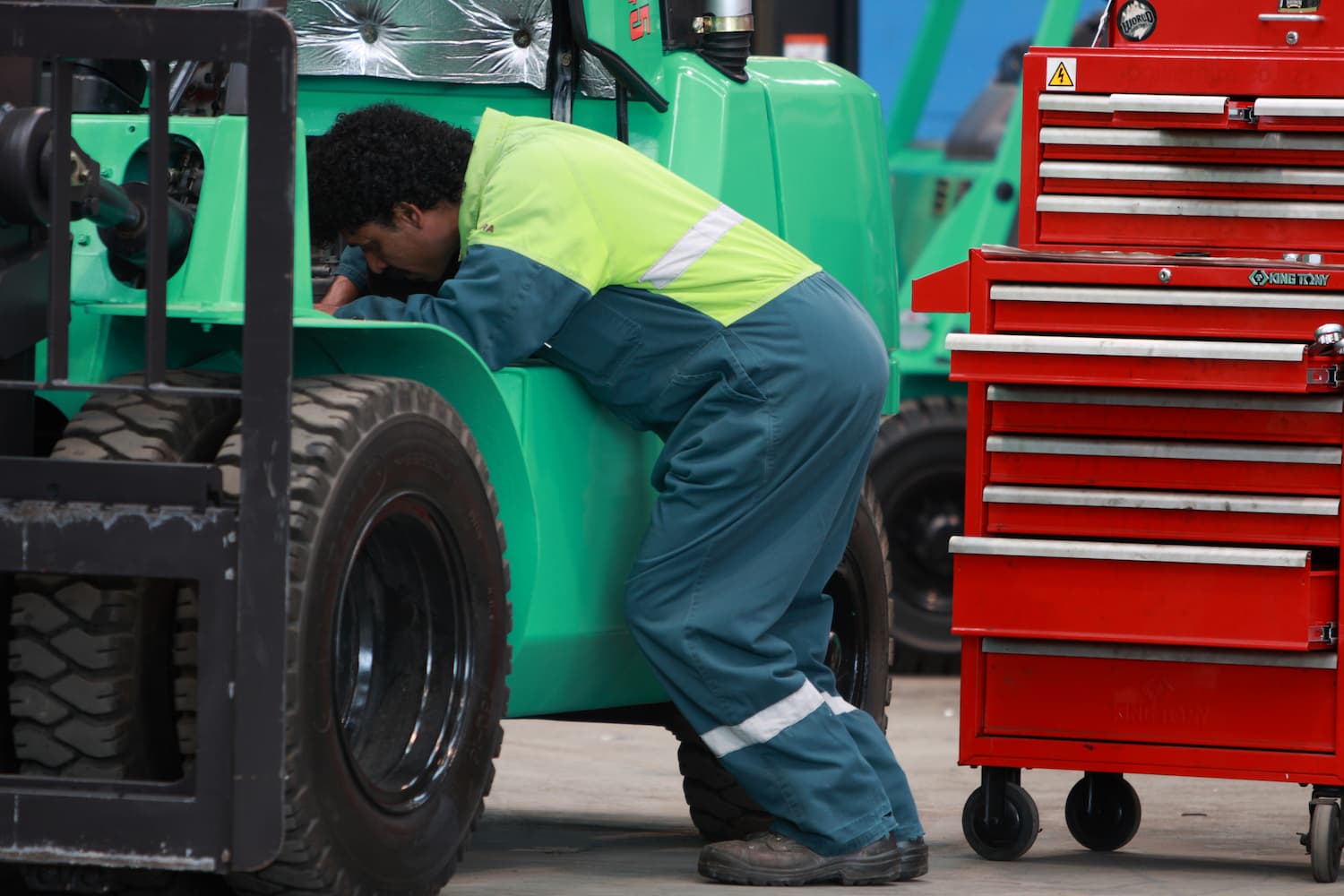Forklifts have become a staple in industrial scenarios for their ability to handle materials with efficiency and precision, and by using a wide range of forklift attachments.
Over the years, forklift manufacturers such as Mitsubishi have developed a wide array of attachments and different forklift parts to enhance the functionality of these versatile machines.
In this article, we will take a look at the multitude of different forklift attachments, exploring their purposes and benefits in different industrial applications. If you’re looking to buy or rent a forklift for specific purposes, here’s all you need to know.
Bale Clamp:
Commonly found in:
Recycling facilities, warehouses, and manufacturing plants.
Description:
The bale clamp attachment is designed for handling compressed materials like paper, cardboard, and textile products. It consists of two arms that close around the bale, providing a secure grip. This attachment is commonly used in recycling facilities, warehouses, and manufacturing plants where bales of materials need to be transported and stacked efficiently.
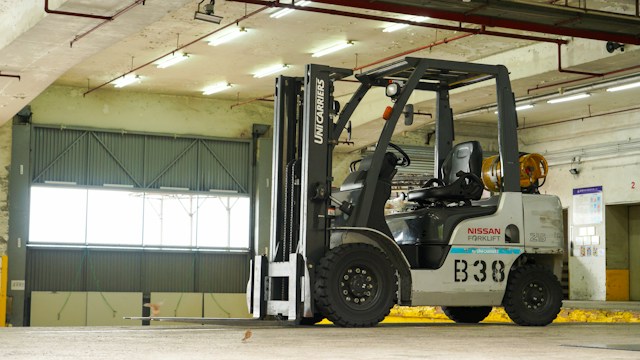
Carpet Spike for Carpet Rolls:
Commonly found in:
Flooring and textile industry, carpet retailers, and distribution centers.
Description:
Designed specifically for the flooring and textile industry, the carpet spike attachment features prongs that penetrate the core of carpet rolls, ensuring a stable grip during transport. This attachment prevents damage to the carpet while facilitating easy loading and unloading processes. It is a valuable tool for distribution centers, carpet retailers, and any facility dealing with large rolls of flooring materials.
Drum Carrier (or Clamp):
Commonly found in:
Chemical and liquid handling industries, manufacturing plants, and warehouses.
Description:
The drum carrier attachment is a crucial tool for industries dealing with liquids and chemicals. The drum carrier attachment consists of two arms equipped with clamps that can be adjusted to securely grip around the circumference of drums. It securely clamps around drums, allowing for safe and controlled movement of these potentially hazardous materials. This attachment is widely utilized in manufacturing plants, warehouses, and distribution centres where the efficient handling of drums is essential.
Jib Attachment:
Commonly found in:
Construction sites, storage facilities, manufacturing plants.
Description:
The jib attachment is a horizontal extension that is affixed to the forklift. It resembles a pivoting arm or crane, allowing the forklift to reach and lift loads at greater heights or distances. Commonly used in construction sites and storage facilities, the jib attachment enhances the forklift’s versatility by providing a horizontal extension, allowing for precise positioning of loads in confined spaces or at elevated heights.
Paper Roll Clamp:
Commonly found in:
Paper and printing industry, paper mills, printing presses, and distribution centers.
Description:
Ideal for the paper and printing industry, the paper roll clamp attachment is designed to handle large rolls of paper. It features arms that gently but securely grip the sides of the paper roll, ensuring the safe transportation of paper rolls without causing deformation or tearing.
Personnel Work Platform (or Work Basket):
Commonly found in:
Warehouses, construction sites, and manufacturing facilities.
Description:
Safety is paramount in many industrial settings, and the personnel work platform attachment allows forklifts to be used as aerial work platforms. This attachment consists of a secure platform with guardrails, enabling operators to work at heights for tasks such as maintenance, repairs, or installations. The platform typically includes safety features to prevent falls.
Rotator (or Rotating Attachment):
Commonly found in:
Material handling, food processing, and manufacturing.
Description:
The rotator attachment is a hydraulically powered device that adds a 360-degree rotating function to the forklift’s forks, allowing operators to manipulate loads without repositioning the entire vehicle. This attachment is beneficial in applications where precise load positioning is crucial, such as in material handling, food processing, and manufacturing.
Slippers:
Commonly found in:
Construction, lumber, and metal fabrication.
Description:
Slippers are extensions that are fitted onto the existing forks of the forklift. They appear as additional lengths that slide onto the fork blades.
This attachment is useful when handling longer loads that exceed the standard fork length. Slippers provide added stability and ensure that longer materials, such as pipes or beams, are securely supported during transport.
Fork Extensions on Arms:
Commonly found in:
Warehousing, logistics, and construction.
Description:
Fork extensions on arms are additional lengths that are attached to the existing forks of the forklift. They resemble elongated forks that slide onto the original forks, offering increased length.
Similar to slippers, fork extensions on arms increase the length of the forklift’s forks. These extensions are especially helpful when handling wide and bulky loads that require additional support. Industries such as construction, lumber, and metal fabrication often benefit from the enhanced capabilities provided by fork extensions.
Tynes:
Commonly found in:
Across various industries; different types of tynes cater to specific applications within manufacturing, logistics, and materials handling.
Description:
Tynes, also known as fork blades, are the main components of a forklift responsible for lifting and carrying loads. They are typically straight, sturdy, and made of durable materials such as steel.
Different types of tynes are available to suit specific applications. For example, wide tynes are suitable for handling bulky items, while narrow tynes are ideal for tightly spaced pallets. Selecting the right type of tynes is crucial for optimizing the forklift’s performance in various tasks.
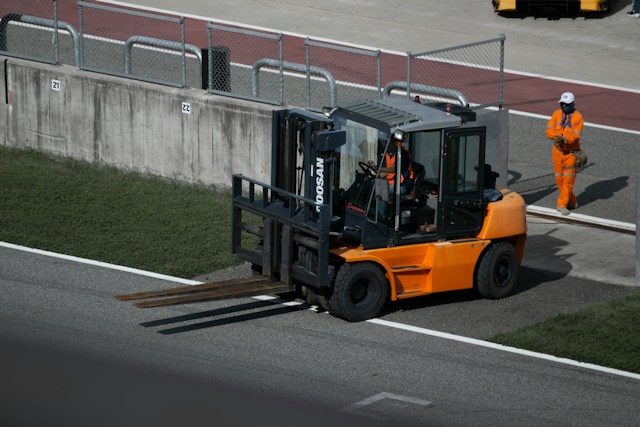
Telescopic Forks:
Commonly found in:
Construction sites for versatile material handling of varying shapes and sizes.
Description:
Telescopic forks are a cutting-edge forklift attachment that allows operators to adjust the length of the forks as needed. This telescoping capability provides a dynamic solution for handling loads of different sizes and shapes. Telescopic forks enhance adaptability in material handling tasks, allowing for increased efficiency in diverse industrial settings.
Carton Clamp:
Commonly found in:
Logistics, distribution centres, and industries involved in the handling of consumer goods packaged in cartons
Description:
The carton clamp attachment is tailored for the efficient handling of goods packaged in corrugated boxes or cartons. Featuring padded arms, this attachment delicately grips the sides of the load, ensuring a secure hold without causing damage to the packaging. Carton clamps are frequently employed in logistics and distribution centres dealing with packaged consumer goods.
Push-Pull Attachment:
Commonly found in:
industries such as agriculture, where bagged products or materials on slip sheets are prevalent, as well as in distribution centers.
Description:
The push-pull attachment is designed to handle loads on slip sheets rather than traditional pallets. Equipped with a mechanism that clamps onto the slip sheet, this attachment allows the forklift to effortlessly push or pull the load onto or off the forks. Industries dealing with bagged goods or products on slip sheets find the push-pull attachment especially advantageous.
Magnetic Fork Attachments:
Commonly found in
Metal fabrication, recycling facilities, and manufacturing plants dealing with ferrous materials.
Description:
Magnetic fork attachments are equipped with powerful magnets, enabling the forklift to lift and transport ferrous materials such as metal sheets, pipes, or components. These attachments are particularly useful in metal fabrication, recycling, and manufacturing environments where the ability to handle magnetic materials is essential.
Hydraulic Fork Positioner:
Commonly found in:
Warehousing, logistics, and manufacturing facilities
Description:
The hydraulic fork positioner is a versatile attachment that allows operators to hydraulically adjust the distance between the forks. This feature streamlines the process of accommodating various pallet sizes, reducing the need for manual adjustments and enhancing overall efficiency in material handling tasks.
Single-Double Pallet Handler:
Commonly found in:
Warehousing, distribution centres, and industries with a high volume of palletized goods
Description:
The single-double pallet handler is designed to handle either one or two pallets simultaneously. The attachment can hydraulically shift from a single to a double configuration, offering flexibility in handling multiple pallets concurrently. This feature is especially useful in warehouses and distribution centres with high throughput requirements.
Tilt Fork Attachment:
Commonly found in:
Construction, outdoor material handling, and environments with uneven surfaces
Description:
The tilt fork attachment allows the operator to tilt the forks forward or backward, providing increased control when handling loads on uneven surfaces. This feature is beneficial in applications where maintaining load stability is crucial, such as in outdoor environments, construction sites, or industries dealing with irregular terrain.
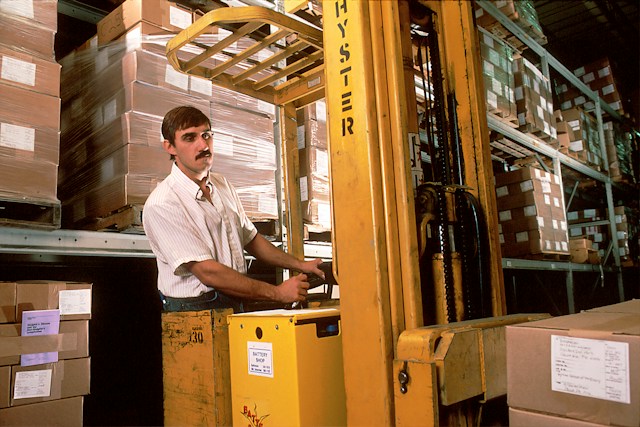
Scale Attachment:
Commonly found in:
Industries with stringent weight measurement requirements, such as food and beverage, pharmaceuticals, and logistics
Description
The scale attachment integrates weighing capabilities into the forklift, enabling operators to accurately weigh loads during material handling. This attachment is useful in industries where precise weight measurements are critical for inventory management and shipping accuracy.
Automated Guided Vehicle (AGV) Attachment:
Commonly found in
Large warehouses, manufacturing facilities, and distribution centres with high-volume and repetitive material handling tasks
Description
AGV attachments enable forklifts to operate autonomously by following predefined paths using sensors and navigation technology. This automation enhances efficiency in material handling, especially in large warehouses or manufacturing facilities with repetitive tasks, by reducing the need for manual operation.
A Tool for Every Occasion
Forklift attachments play a pivotal role in expanding the capabilities of these indispensable industrial machines.
From specialised clamps for delicate materials to extensions that enable the handling of longer loads, each attachment serves a unique purpose, contributing to increased efficiency and safety across diverse industries. No matter if you’re only looking to get into the world of forklift operation, or if you are an experienced operator, it is vital to be aware of all the attachments available to use.
As technology continues to advance, we can expect further innovations in forklift attachments, further enhancing the adaptability and productivity of these workhorses in the industrial landscape.
